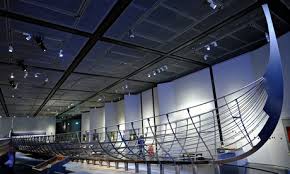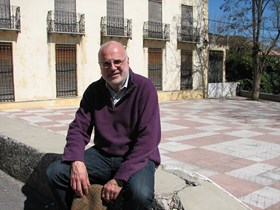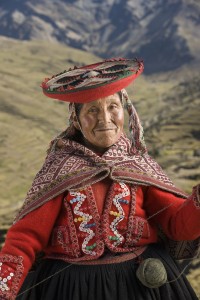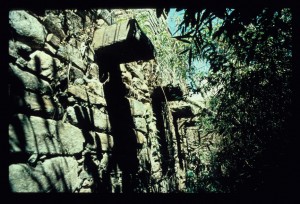The Vikings got to Ukraine first
 Funny how things come together. I’ve just been to a preview of the British Museum’s new blockbuster show on the Vikings, which opens later this week just as the world is focussed on Ukraine. A side-bar to the exhibition, which naturally focusses on the Viking invasions of Britain – is the less well-known Viking progress east, when ‘the Rus’ travelled down to Novgorod and Kiev in their longships and founded what became Russia.
Funny how things come together. I’ve just been to a preview of the British Museum’s new blockbuster show on the Vikings, which opens later this week just as the world is focussed on Ukraine. A side-bar to the exhibition, which naturally focusses on the Viking invasions of Britain – is the less well-known Viking progress east, when ‘the Rus’ travelled down to Novgorod and Kiev in their longships and founded what became Russia.
.
The Viking leader Rurik and his dynasty established their base in Kiev from about 862 on – the same time as ‘the great army’ landed in East Anglia, martyred King Edmund and put Alfred the Great’s kingdom to the sword.
The difference is that in Russia the Vikings won. Kiev is as a consequence as central to Russian identity and history as Winchester or Canterbury to England. Hardly surprising they should take a proprietorial interest in what happens there; or that the descendants of the Vikings should value the navy at Sevastopol enough to protect their Crimean base.
The Vikings themselves travelled on past Kiev and down through the Russian river system to reach Constantinople. Now that must have been a clash of civilisations. Islamic commentators of the time were impressed by the Vikings’ fighting spirit, but less by their personal habits, reporting that they did not wash after urinating, or after sex, or indeed much at all.
The Vikings got to Ukraine first Read More »






 Although you can see some of
Although you can see some of  The project took him so long that he started shooting on a film camera and ended on a digital one, with a lot of retouching and “painting” in the lab. Occasionally the black-and-white can frustrate (hard to see a picture of red and green macaws without wishing for colour), but it often works beautifully, like the large egrets in the Pantanal or Disappointment River winding its way through Canada.
The project took him so long that he started shooting on a film camera and ended on a digital one, with a lot of retouching and “painting” in the lab. Occasionally the black-and-white can frustrate (hard to see a picture of red and green macaws without wishing for colour), but it often works beautifully, like the large egrets in the Pantanal or Disappointment River winding its way through Canada. The ability to fly over dense forest and build up a 3D picture of what may have once lain beneath is quite phenomenal. Unfortunately it´s also expensive, as the going international rate for a helicopter is around $1000 an hour – rather more than it costs for a few volunteers to scrape away at the dirt on a traditional dig. The Australian team covered some 370 sq kms in Cambodia so the bill must have been eye-watering – but worthwhile.
The ability to fly over dense forest and build up a 3D picture of what may have once lain beneath is quite phenomenal. Unfortunately it´s also expensive, as the going international rate for a helicopter is around $1000 an hour – rather more than it costs for a few volunteers to scrape away at the dirt on a traditional dig. The Australian team covered some 370 sq kms in Cambodia so the bill must have been eye-watering – but worthwhile.
